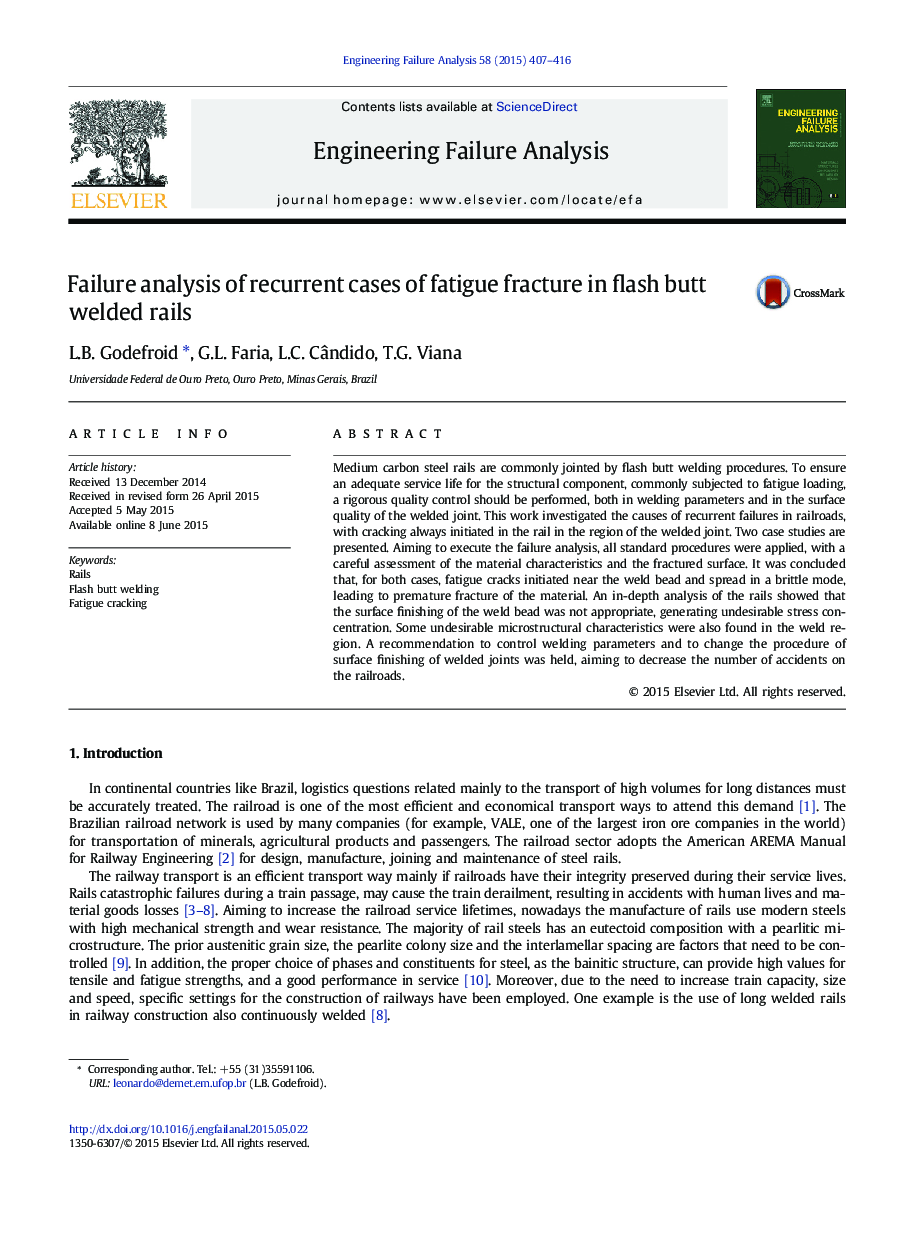| Article ID | Journal | Published Year | Pages | File Type |
|---|---|---|---|---|
| 768429 | Engineering Failure Analysis | 2015 | 10 Pages |
Highlight•This work investigated the causes of two fatigue failures in welded railroads.•Cracks always initiated near the weld bead, a local of high stress concentration.•A catastrophic brittle tearing was observed in both cases.•A minimum microstructure modification at the weld region must be guaranteed.•More rigorous criteria for burr removal and superficial finishing must be adopted.
Medium carbon steel rails are commonly jointed by flash butt welding procedures. To ensure an adequate service life for the structural component, commonly subjected to fatigue loading, a rigorous quality control should be performed, both in welding parameters and in the surface quality of the welded joint. This work investigated the causes of recurrent failures in railroads, with cracking always initiated in the rail in the region of the welded joint. Two case studies are presented. Aiming to execute the failure analysis, all standard procedures were applied, with a careful assessment of the material characteristics and the fractured surface. It was concluded that, for both cases, fatigue cracks initiated near the weld bead and spread in a brittle mode, leading to premature fracture of the material. An in-depth analysis of the rails showed that the surface finishing of the weld bead was not appropriate, generating undesirable stress concentration. Some undesirable microstructural characteristics were also found in the weld region. A recommendation to control welding parameters and to change the procedure of surface finishing of welded joints was held, aiming to decrease the number of accidents on the railroads.
